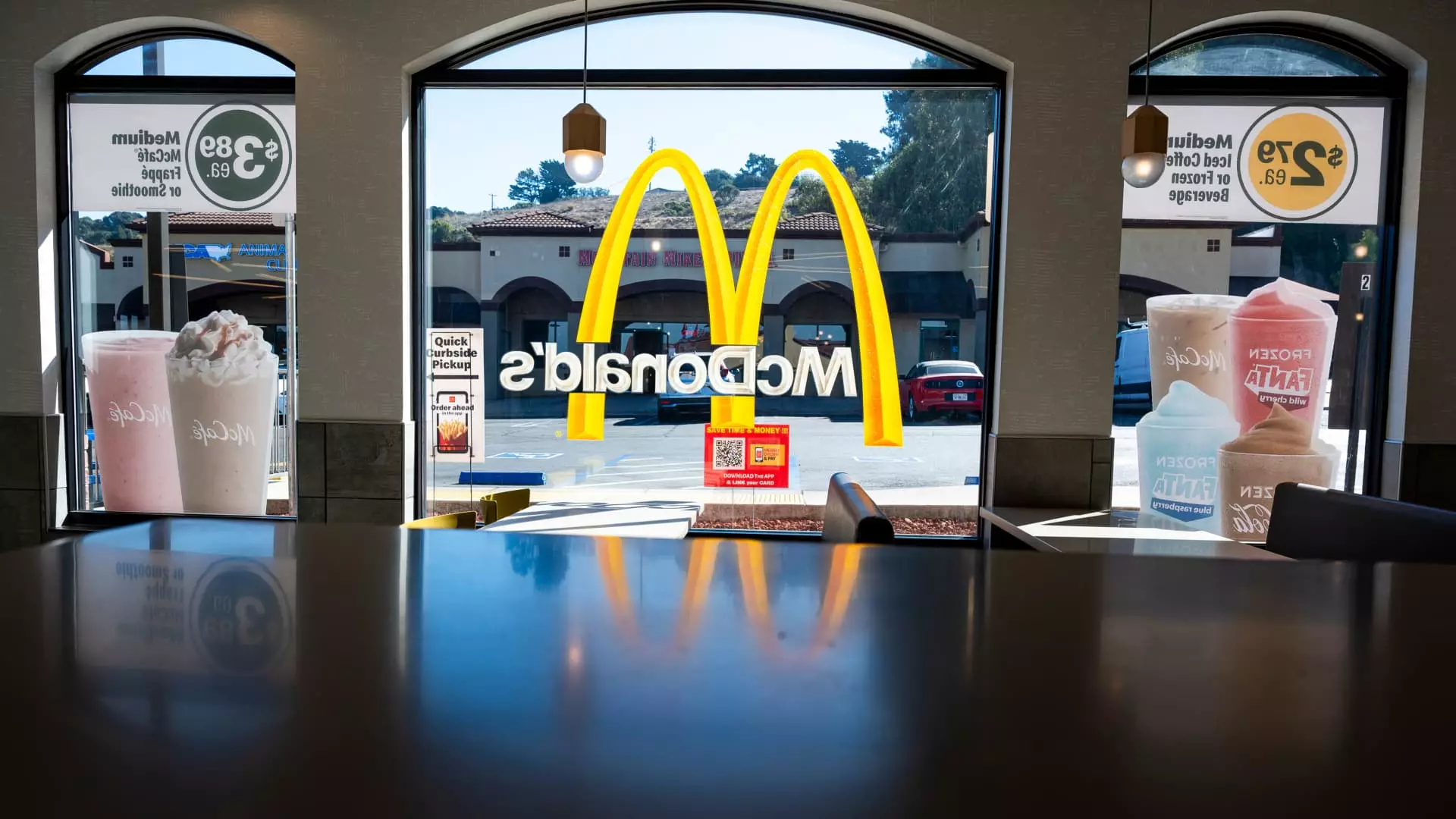The food service industry faced tumultuous conditions at the start of 2025, hampered by adverse weather patterns and shifting consumer sentiments. Overcoming these challenges requires resilience and strategic maneuvers from major restaurant chains navigating the nuances of a recovering economy. Key players like McDonald’s, Burger King, and Subway have begun to witness fluctuations in consumer preferences, challenging them to adapt and innovate their offerings significantly.
As winter approached, various factors weighed heavily on the food service sector. Freezing temperatures and the onset of wildfires created significant barriers to customer footfall, particularly in regions like Los Angeles. Additionally, many consumers exhibited heightened caution with their spending, leading to a decline in visits to dining establishments. The saying “In like a lion, out like a lamb” aptly describes how executives anticipated that the challenging start would eventually pave the way for a smoother outcome as the year unfolded.
Despite these difficulties, several restaurant chains reported improvements towards the end of the previous year. Notably, both Burger King and Popeyes introduced value-driven menu items that lured back customers who had previously opted for home-cooked meals, successfully stabilizing their quarter four sales figures. However, these gains were met with setbacks in the following month as poor weather and lingering economic concerns impacted traffic dramatically. Wendy’s CFO highlighted about the industry’s struggles early in the year, illustrating the unpredictable nature of consumer behavior in a fluctuating market.
Sales Trends and Consumer Caution
January presented a double-edged sword for the fast-food industry. While net sales growth of 3.4% compared to the same period the previous year offered a glimmer of hope, it fell short of December’s more robust 4.9% increase. This deceleration can be indicative of a broader aversion amongst consumers, as various executives mentioned that individuals are waiting to assess economic conditions before committing to dining out.
Subway’s U.S. President encapsulated this inertia by emphasizing consumer preferences for value, quality, and portion control. Many patrons are reluctant to exchange their culinary standards for perceived savings, indicating that restaurant chains must find methods to enhance value without compromising food quality. This tension between consumer demand and restaurant pricing strategies poses ongoing challenges as they work to balance cost pressures with customer satisfaction.
Comparative Performance and Weather Impact
As the year progresses, the restaurant industry is poised for a rebound, facilitated by straightforward year-over-year comparisons with prior declines. Many companies will benefit from the lower benchmarks set last year, where negative traffic was almost consistent across the months, excluding a brief uptick in November. Positive expectations linger, with hopes that summer will yield a boost as patrons from previous quieter months return to their dining habits.
The same cannot be said for all players in the market. For Chipotle Mexican Grill, the effects of weather-induced challenges manifested significantly in January, with traffic falling by 2%, primarily attributed to the harsh winter and the timing of New Year’s Day. Compounding this were forecasts predicting modest performance in upcoming quarters, prompting investor concerns that led to stock fluctuations. The chain’s outlook serves as a stark reminder of how vulnerable businesses are to external factors, especially those beyond their control.
Inflation and Consumer Sentiment
While some chains remain optimistic, broader economic concerns loom large. The potential ramifications of ongoing inflation present considerable challenges for consumers and businesses alike. January showed unanticipated spikes in food prices, raising questions about how far consumers might stretch their budgets when opting to dine out. Consumer sentiment dipped, indicating that households were worried about rising costs, which could further hinder the recovery process across the industry.
Despite these headwinds, industry leaders are holding onto hope. McDonald’s noted that the fallout from food safety issues had started to dissipate, and they anticipated a surge in sales as consumer confidence rebounds. However, the uncertainty brought about by external economic conditions persists, requiring careful navigation and responsive strategies.
As the restaurant sector moves further into 2025, adaptability will be crucial. Chains like Starbucks, which faced declining same-store sales for several quarters, may find the path ahead to recovery more protracted. The importance of reevaluating business models and marketing strategies cannot be overstated.
The restaurant industry stands at a crossroads. It requires strategic recalibrations, an acute understanding of evolving consumer priorities, and agility in navigating economic turbulence. While challenges undoubtedly lie ahead, a concerted focus on value, quality, and effective adaptation will determine the sector’s resilience in reclaiming its footing and fostering growth in what promises to be a captivating year ahead.

